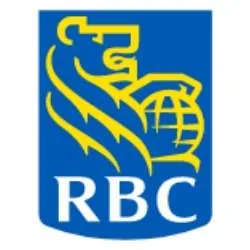The global concern for the current and future state of our planet continues to grow, with millions of people wondering how they can make a positive impact. We’re challenged daily by non-profits, communities and businesses to make eco-friendly choices, but lifestyle changes aren’t the only way to help. Environmental awareness is a huge opportunity for innovation, which is why green banks are becoming increasingly popular.
Banks with an environmentally friendly cause
| Sustainability efforts | Get started | |
|---|---|---|
 | BMO’s sustainable banking solutions focus on supporting clients and operations in a low-carbon transition, including: - Financing projects that reduce greenhouse gas emissions and support clean energy, sustainable cities and climate resilience - Offering guidance and research through the BMO Climate Institute to help clients manage climate-related risks - Integrating environmental considerations into lending, investment and operational decisions - Supporting energy-efficient housing, sustainable real estate and green business practices - Working toward net-zero emissions in financing activities by 2050, including by opening a net-zero energy branch | |
 | Scotiabank's Global Banking and Markets division has financed over $132 billion in sustainable projects, including renewable energy, toward its $350 billion by 2030 goal. Their Climate Commitments are: - ensure robust climate-related governance and transparency in reporting - enhance integration of climate risk assessments in lending, financing and investing activities - decarbonize operations and find innovative solutions to reduce the Bank’s impact on the changing climate - establish a Climate Change Centre of Excellence to mobilize internal and external collaboration, dialogue and information sharing and contribute to the global conversation on climate change | |
 | TD Bank's green leaf symbol represents products, services and business-related initiatives that contribute to the environmental goals and commitments of TD Bank Group, which include: - Contributing to a low carbon economy through reduction of greenhouse gas (GHG) emissions or reduction of energy usage - Growing areas of protected critical forest habitat and enhancing urban green space - Reducing paper usage - Using paper and wood products derived from sustainably managed forests - Over 490,000 tress planted through TD tree days since 2010 - Provided $10.8 billion in financing to companies with low carbon operations - Offers electronic banking, paperless statements, and energy-wise ATMs | |
 | RBC is aiming to be net-zero by 2050 with its Climate Blueprint focusing on financing sustainable projects and working towards climate solutions. RBC's Climate Blueprint plans includes: - supporting clients in the low-carbon transition - advancement in capabilities in climate risk management - achieving net-zero carbon emissions in global operations annually - speaking up for smart climate solutions - investing in technology to address complex environmental challenges | |
| CIBC has financed over $160 billion in sustainable projects as part of its $300 billion goal by 2030. Their Corporate Environmental Policy includes commitments to: - protecting and conserving the environment - safeguard the interests of CIBC's stakeholders from unacceptable levels of environmental risk - support the principles of sustainable development Since 2015, CIBC's internal paper use per full-time equivalent employee has decreased by more than 22%. They continue to do this by offering paperless banking methods such as pre-authorized bill payment, online transfers, direct deposit programs, eDeposits and telephone and online and mobile banking. | ||
 | Tangerine serves over 1.9 million clients using a fraction of the resources of traditional banks. Their promise is to: - lead the sustainability challenge by example - continuously work on eliminating their environmental footprint - share their achievements with their clients - work with their clients, vendors and employees to look for sustainable lifestyle options and business solutions |
What are green banks?
Green banks use innovative business models and financing techniques to encourage private investment in clean and sustainable technology. While these socially-responsible institutions vary in size, approach and impact, they generally share the following characteristics:
- Aim to facilitate investment in LCR infrastructure and technology
- Employ innovative transaction structures
- Demonstrate strong market expertise
- Operate with independent authority to design and implement investment strategies
- Maintain a focus on cost-effectiveness and performance
Beyond these operational characteristics, a few common goals of green and socially-responsible banks include:
- Meeting ambitious emissions targets
- Mobilizing private capital
- Lowering the cost of financing for clean energy initiatives
- Reducing energy costs
- Developing and scaling green technology markets
- Supporting local community development
- Creating green jobs
What is the most environmentally friendly bank?
Some of the best examples of financial institutions taking meaningful steps toward sustainability include TD Bank and BMO.
TD Bank has set a clear target to achieve net-zero greenhouse-gas emissions in its operations and financing by 2050, and plans to reach $500 billion in sustainable and decarbonization business activities by 2030. The bank also supports community-level green initiatives, such as funding renewable energy projects and helping customers make energy-efficient home upgrades.
BMO has pledged to achieve net-zero financed emissions by 2050 and launched the BMO Climate Institute, which helps clients transition to a low-carbon economy. The bank has also issued multiple green bonds to fund projects that support clean energy, sustainable cities and resource efficiency.
How to be more eco-friendly with your banking
With banks offering more sustainable options, it’s up to each of us to adapt and support efforts that lessen environmental impact. Here are some practical ways to make your banking habits more eco-friendly.
Use internet banking as much as you can
For most of your current and future life, visiting the bank consistently is something of the past. Unless you’re opening a new account, which some banks now also offer through an online application, just about every single thing you would need to use your bank account can be done online. This includes basic transactions, investing, trading and business services.
Use a mobile banking app
As with internet banking, a banking app is a powerful platform for almost everything you would have usually done at a physical branch. Mobile banking apps are an extension of what internet banking offers. Compare the top 5 mobile banking apps here.
Switch to electronic statements
If you’re in the habit of meticulously working through your bank statements every one to three months, consider receiving them electronically. Paper might feel more natural now, but over time, you’ll start appreciating the accessibility and time-saving power behind eStatements!
Ask whether your local branch is environmentally friendly
Many banks now promote using recycled materials within their branches. This includes marketing materials like brochures and posters.
Choose a bank with green policies
If your current bank doesn’t have strong environmental policies, consider switching to one that does. Look for banks that support renewable energy, sustainable projects and net-zero commitments.
Use cards made from recycled or biodegradable materials
Some Canadian banks have introduced eco-friendly debit and credit cards made from recycled or bio-sourced plastics. TD, for instance, now issues cards made from 90% recycled materials, helping reduce single-use plastic waste.
Support green investment options
If your bank offers sustainable investment funds or ESG portfolios, consider investing there. These funds prioritize companies with strong environmental and social practices.
Why do banks need to offer environmentally friendly banking options?
Banks have a major influence on both the economy and the environment. They manage vast amounts of data, physical resources and financial capital that shape how societies grow and use energy. Every aspect of banking — from printing paper statements and producing cash to financing large-scale industrial projects — has an environmental footprint.
By reducing paper use, digitizing operations and investing in sustainable technologies, banks can significantly cut emissions and waste. More importantly, through their lending and investment decisions, banks have the power to direct capital toward renewable energy, green infrastructure and low-carbon businesses, helping entire industries transition to a cleaner economy.
Bottom line
Beyond lifestyle changes like recycling more, driving less and being more conscious toward the environment, the products and services you use can also make a positive impact. On a larger scale, green banks aim to facilitate investment in clean technology, so choosing to bank with them could encourage others to adopt socially responsible behaviour. And if you’re interested in what else banks are doing to be good stewards, compare accounts with other ethical causes.
Frequently asked questions
Sources
More guides on Finder
-
How to choose the best bank for daily banking
Your guide to finding the best bank in Canada for personal banking and managing your money.
-
Tangerine new account offers and promotions
Explore all of the latest Tangerine new account offers and promotions available now.
-
Easiest bank account to open online in Canada
Compare six bank accounts that are quick and easy to open online.
-
The best banks in Canada for 2025
We compare Canada’s best banks to help you find your perfect banking match.
-
Scotiabank promotions and offers
Explore all the latest Scotiabank promotions and offers available now.
-
16 best new bank account offers for December 2025
Earn cash, rewards points, bonus interest rates and more with these new bank account offers and promotions.
-
Bank of Canada interest rate forecast report
Read Finder’s BoC Interest Rate Report for forecasts from some of Canada’s brightest minds in economics and learn more about how recent rate increases could affect Canada’s real estate market.
-
Open a bank account online in Canada in 5 easy steps
Compare and open a bank account online in Canada in as little as 5 minutes. Learn what you need to apply and how to get started today.
-
Best joint bank accounts in Canada for 2025
Opening a joint bank account is a big step for any couple. Find out more about what to look for in an account and how to avoid the common pitfalls.

